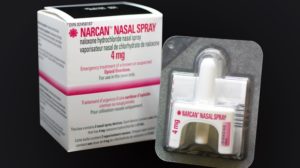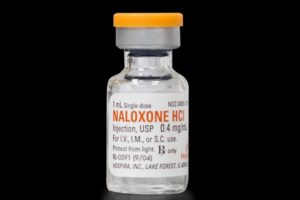
More than 2.3 million Americans are battling an opioid use disorder (OUD), but only less than half of this population are receiving approved medications like methadone and buprenorphine to treat the disorder. This is despite the fact that medication is the only treatment supported by years of evidence depicting its efficacy in assisting patients to recover from opioid addiction.
Even though methadone and buprenorphine are established as effective treatments for combatting OUD, their level of utilization for treatment remains significantly low. A recent reported assessed the extent and depth of reporting conducted on OUD medication treatment during the current opioid epidemic, offering valuable insight into the public dialogue surrounding this issue.
The fundamental role of news media as a source of health information for the public, and its role in shaping knowledge regarding these medications is undeniable. In today’s age of digital media and quick information, the results are monumental.
Understanding Medication-assisted Treatments (MAT)
Despite being a complex and chronic medical condition, OUD can be successfully treated with proven medications that facilitate recovery and prevent deaths. Yet, Medication-assisted Treatments remain largely inaccessible for many patients.
Presently, there exist three drugs that can effectively treat opioid addiction: methadone, buprenorphine, and naltrexone. An estimated 20 percent of Americans with an opioid use disorder are taking one of these.
 Recently released and revised MATs have been an essential area of research to counter the present opioid epidemic.
Recently released and revised MATs have been an essential area of research to counter the present opioid epidemic.
MATs have helped patients in their recovery by the administration of opioid agonists (methadone, buprenorphine, oxycodone), antagonists (naltrexone, naloxone), and combinations of the two (buprenorphine/naloxone). These have been shown to be successful, particularly when combined with psychological counseling.
Are MATs just moving from one addiction to another?
Buprenorphine and methadone are administered in monitored, controlled environments, safe and effective for treating opioid addiction when used as directed. These medications are administered orally or sublingually in predetermined doses, their effects differ from those of heroin and other abused opioids, dismissing the myth that MATs are just moving on from one addiction to another.
The cycle of euphoria, crash, and withdrawals are differentiating characteristics of addiction resulting from heroin’s, for instance, quick onset and short duration of action in the brain. Contrarily, methadone and buprenorphine have gradual inception and elicit consistent levels of the drug in the brain.
Hence, patients on these medications do not experience a high, and euphoric effects from any further use of drugs of abuse are inhibited. There are no resulting physiological or behavioral discrepancies from rapid fluctuations in drug levels in maintenance treatments.
It is, however, essential to know that MATs work best in conjunction with therapy and counseling. The aim is not just to remedy the physical ramifications of addiction, but also re-learn healthy coping strategies to live a fruitful life.
The study
Over the course of years stretching from 2007 till 2016, researchers assessed highly circulated and widely viewed U.S. news sources for stories based upon the OUD medications. Following trends were highlighted:
- Reporting on medication escalated rapidly from 2015 to 2016.
- Local news coverage in states with high opioid overdose rates highlighted more negative than positive consequences of OUD medication use.
- Less than 40 percent of news stories mentioned these medications being underused.
- Underuse has not been framed as a problem in most news media reporting on these medications.
Why is this important?
 The authors of the study concluded a dire need for public health and addiction experts to develop more effective strategies for the circulation of information regarding the value of these medications in reducing opioid-related morbidity and mortality.
The authors of the study concluded a dire need for public health and addiction experts to develop more effective strategies for the circulation of information regarding the value of these medications in reducing opioid-related morbidity and mortality.
As America continues to struggle amid the throes of the opioid epidemic, increasing the availability and accessibility of medications that can effectively treat opioid use disorders will be of high importance. Restricting the availability of methadone and buprenorphine has only worsened this lag in treatment.
The time has arrived upon us to update laws that reduce barriers to access and extend the benefits of proven, effective medications to the affected individuals throughout the country.
References:
1. https://www.healthaffairs.org/doi/full/10.1377/hlthaff.2018.05075
2. https://www.drugabuse.gov/publications/principles-drug-addiction-treatment-research-based-guide-third-edition/frequently-asked-questions/use-medications-methadone-buprenorphine
3. https://drugfree.org/article/medication-assisted-treatment/
About the Author:
 Sana Ahmed is a journalist and social media savvy content writer with extensive research, print, and on-air interview skills. She has previously worked as a staff writer for a renowned rehabilitation institute, a content writer for a marketing agency, an editor for a business magazine and been an on-air news broadcaster.
Sana Ahmed is a journalist and social media savvy content writer with extensive research, print, and on-air interview skills. She has previously worked as a staff writer for a renowned rehabilitation institute, a content writer for a marketing agency, an editor for a business magazine and been an on-air news broadcaster.
Sana graduated with a Bachelors in Economics and Management from the London School of Economics and began a career of research and writing right after. Her recent work has largely been focused upon mental health and addiction recovery.
The opinions and views of our guest contributors are shared to provide a broad perspective of addictions. These are not necessarily the views of Addiction Hope, but an effort to offer a discussion of various issues by different concerned individuals.
We at Addiction Hope understand that addictions result from multiple physical, emotional, environmental and genetic factors. If you or a loved one are suffering from an addiction, please know that there is hope for you, and seek immediate professional help.
Reviewed and Approved by Jacquelyn Ekern, MS, LPC on July 23, 2019
Published July 23, 2019, on AddictionHope.com
